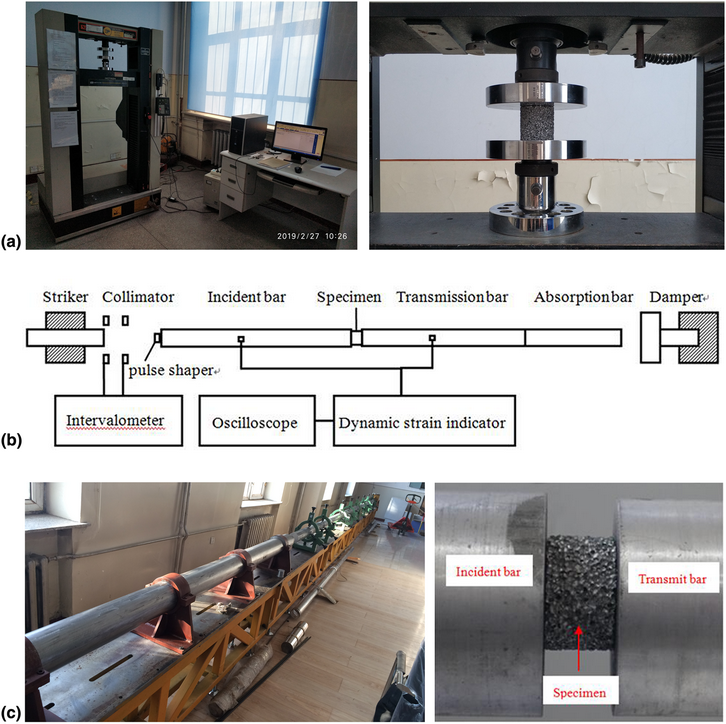Article contents
Dynamic mechanical properties of closed-cell aluminum foams with uniform and graded densities
Published online by Cambridge University Press: 30 June 2020
Abstract

In this study, the quasi-static and dynamic mechanical behaviors and the energy absorption capacity of closed-cell aluminum foams with uniform and graded densities were experimentally studied. The effects of density, strain rate, and graded density on the mechanical performances of aluminum foams were quantitatively evaluated. It was shown that the density had a significant effect on the quasi-static and dynamic compressive stress of aluminum foams. Moreover, impact compression experiment results revealed that aluminum foam was sensitive to the strain rate. As the strain rate increased, the plateau stress and energy absorption capacity increased distinctly and the rate of deformation increased correspondingly. Finally, the investigation of aluminum foams with uniform and graded densities to study their deformation and failure mechanisms, mechanical characteristics, and energy absorption capacities showed that the GD 0.48-IV specimen exhibited superior impact resistance. The present work can provide a valuable reference for the optimum design of aluminum foam against impact loading.
- Type
- Article
- Information
- Journal of Materials Research , Volume 35 , Issue 19: Focus Issue: Porous Metals: From Nano to Macro , 14 October 2020 , pp. 2575 - 2586
- Copyright
- Copyright © Materials Research Society 2020
References
- 9
- Cited by





